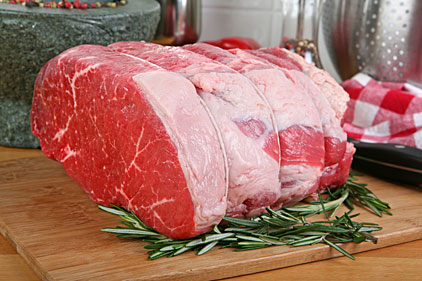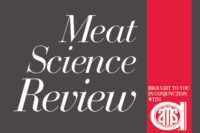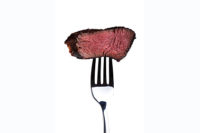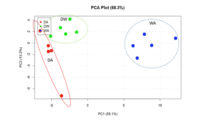 Several studies have shown consumer overall acceptability was more highly correlated with flavor ratings than tenderness or juiciness, regardless of tenderness variation (Neely et al., 1998; O’Quinn et al., 2012; Thompson, 2004). Given these results, research was needed to determine whether similar beef flavor trends would be observed in muscles other than the longissimus lumborum (strip or ribeye steaks).
Several studies have shown consumer overall acceptability was more highly correlated with flavor ratings than tenderness or juiciness, regardless of tenderness variation (Neely et al., 1998; O’Quinn et al., 2012; Thompson, 2004). Given these results, research was needed to determine whether similar beef flavor trends would be observed in muscles other than the longissimus lumborum (strip or ribeye steaks).
Until recently, the chuck had traditionally been marketed as low-priced roasts or ground beef; however, following muscle profiling work of the beef chuck and round that identified uses for muscles such as the teres major (petite tender) and infraspinatus (flat iron), the wholesale value of the chuck has increased, thus enhancing the overall value of a beef carcass (Von Seggern, Calkins, Johnson, Brickler and Gwartney, 2005).
Moreover, the top sirloin has been associated with inconsistencies in palatability, particularly in tenderness (Harris, Miller, Savell, Cross and Ringer, 1992; Neely et al., 1998), which is why increased usage of mechanical tenderization has been explored in the last decade.
If overall eating satisfaction of chuck, sirloin and round cuts from high-quality carcasses (as determined by the USDA quality grading system) is comparable to loin cuts from lower-quality carcasses, additional value could be captured by marketing muscles with intermediate tenderness, which are currently underutilized in high-quality carcasses.
Moreover, viable steak alternatives for foodservice establishments may be discovered.
Consumer sensory analysis (120 consumers) was conducted in Lubbock, Texas, to determine differences in beef palatability between two quality grade categories [Upper 2/3 (Top) Choice and Select] and four muscles [longissimus lumborum (LL), strip loin; gluteus medius (GM), top sirloin butt; serratus ventralis (SV), under blade; and semimembranosus (SM), top round].
 We believed increased intramuscular fat (IMF) associated with the higher quality grade muscles (Top Choice) would increase flavor and consumer preference (overall liking) and could compensate for reduced tenderness in steaks from underutilized muscles in the chuck, sirloin and round.
We believed increased intramuscular fat (IMF) associated with the higher quality grade muscles (Top Choice) would increase flavor and consumer preference (overall liking) and could compensate for reduced tenderness in steaks from underutilized muscles in the chuck, sirloin and round.
Generally, tenderness, flavor and overall liking scores were more desirable for Top Choice compared with Select, regardless of muscle. Consumers rated LL as more tender (P < 0.05) than SV and SM, but similar to GM (P = 0.52). Overall and flavor acceptability were similar (P > 0.05) between LL, GM and SV, regardless of quality grade. All three palatability traits were highly correlated to overall liking (r = 0.56-0.88) for each muscle.
Superior flavor and juiciness could compensate to improve the overall liking and acceptability of beef when consumers scored tenderness low. Overall liking of SV and GM from higher-quality carcasses was superior to LL from lower-quality carcasses and comparable to LL from higher-quality carcasses. The SV Top Choice was most desirable for juiciness compared with all other muscle × quality grade treatments, perhaps due to higher pH values increasing water-holding capacity within the SV and greater IMF of SV than any other muscle.
Overall, results showed that GM and SV from Top Choice carcasses had comparable overall consumer acceptability to Top Choice LL, therefore, targeted marketing of GM and SV from Top Choice could add additional value to the carcass.
For more information contact Andrea Garmyn (andrea.garmyn@ttu.edu) or Mark Miller (mfmrraider@aol.com).




Report Abusive Comment